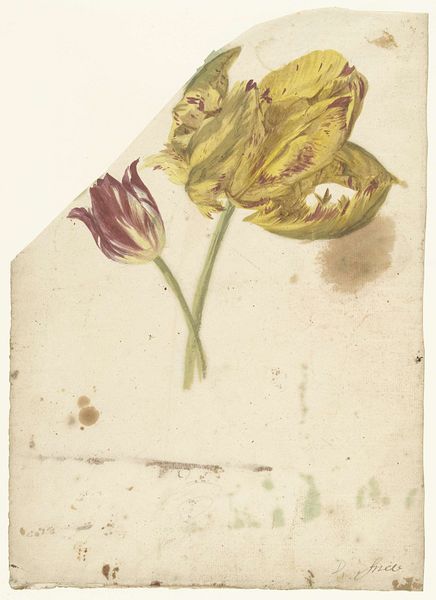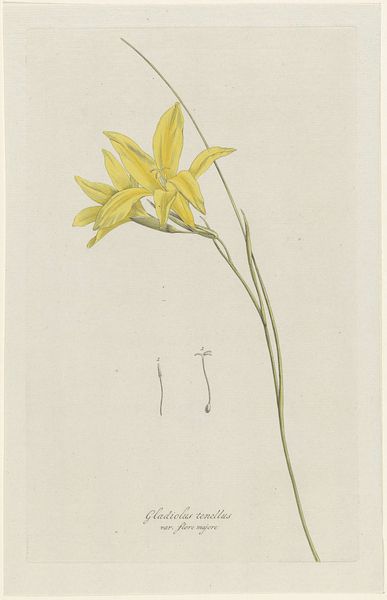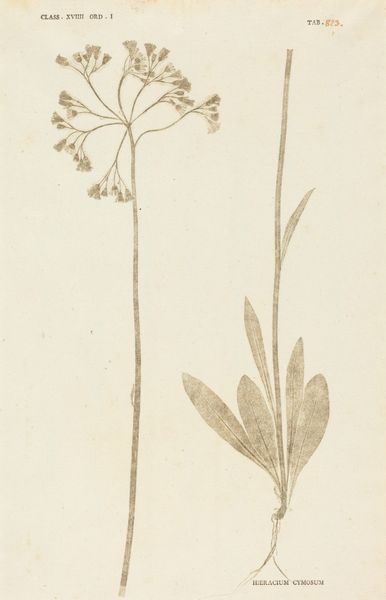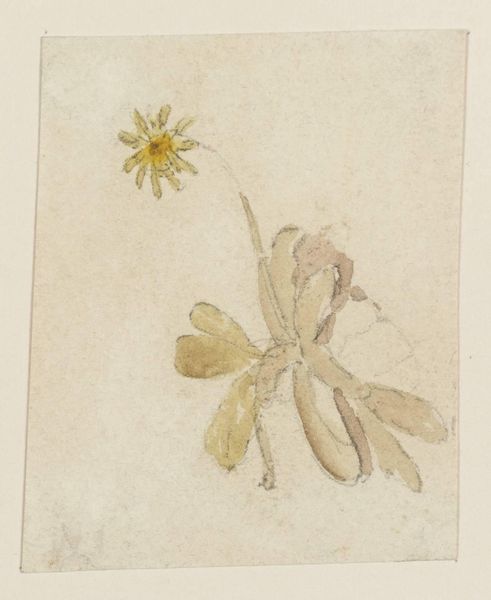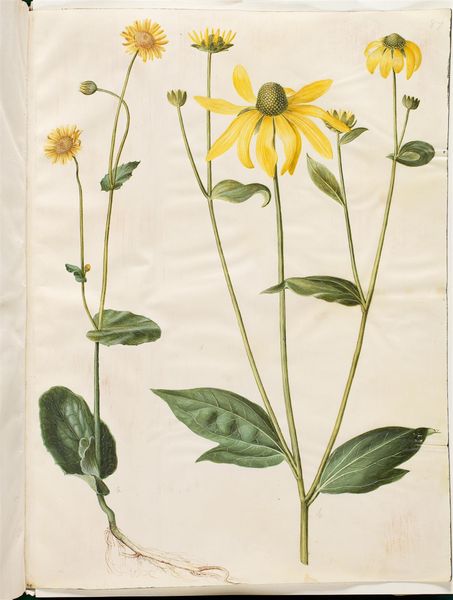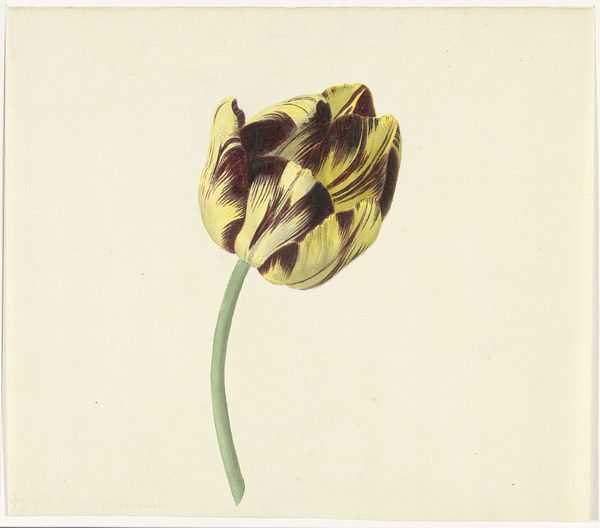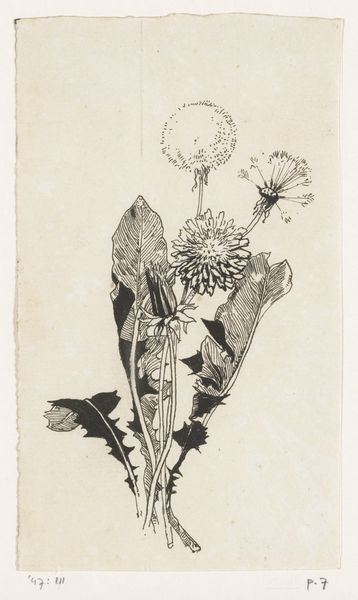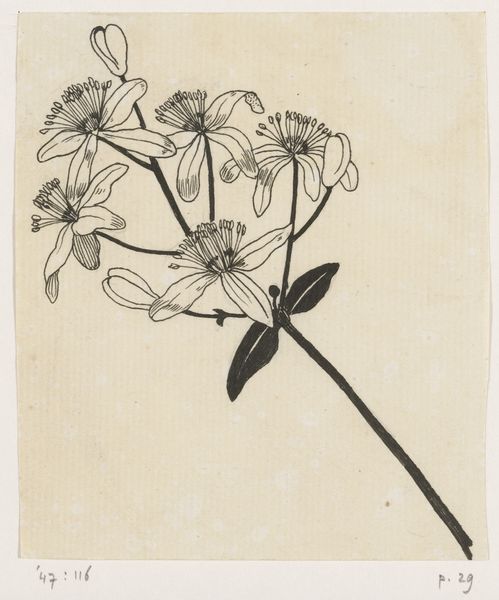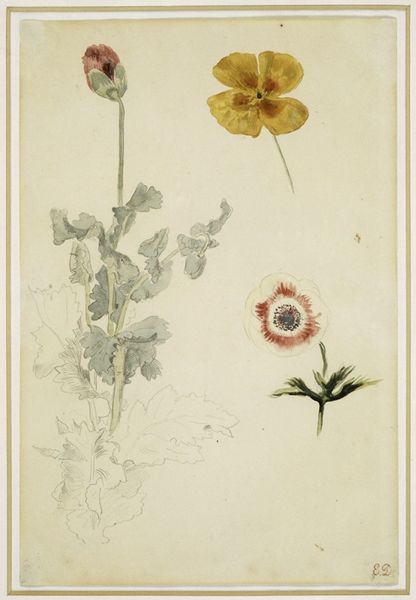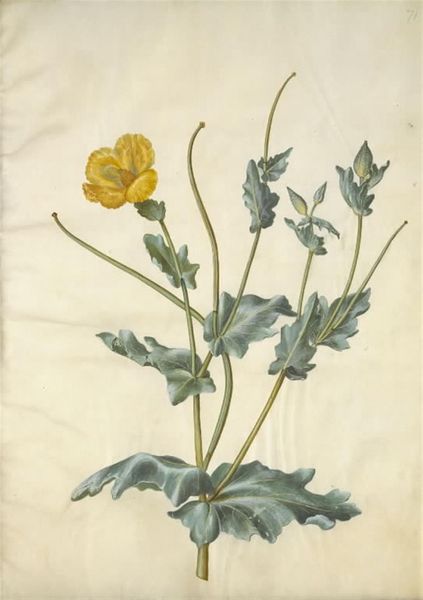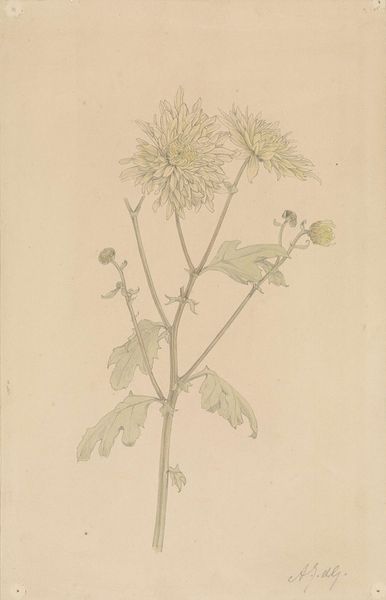
drawing, watercolor, pencil
#
drawing
#
landscape
#
watercolor
#
pencil
#
watercolour illustration
Dimensions: height 152 mm, width 144 mm
Copyright: Rijks Museum: Open Domain
Editor: This is a drawing titled "Zonnebloem," or Sunflower, made with watercolor and pencil sometime between 1800 and 1900 by D. van Alphen. I’m struck by the detail of the wilting petals – what story does that tell, or what do you see in it? Curator: A single sunflower rendered with such delicate precision invites us to consider the complex symbolism sunflowers have accrued. Throughout history, the sunflower, with its heliotropic nature, turning its face always toward the sun, has been an emblem of unwavering faith and spiritual seeking. What happens when it starts wilting? Editor: So it goes from faith to…doubt? Disillusionment? Curator: Perhaps. Or maybe a poignant commentary on the transient nature of beauty and the inevitability of decline. But note how, even in its wilting, it holds a certain grace, an elegance. Think about the Victorian language of flowers—each bloom carried coded meanings. Editor: Like a secret message in plain sight. How fascinating. Do you think the artist was intentionally participating in that tradition? Curator: It's entirely possible. Sunflowers were potent symbols, embraced by various artistic movements to signify warmth, adoration, and even vanity due to their striking appearance. Alphen's rendering possesses a contemplative quality. Editor: So, it's more than just a pretty flower; it's loaded with cultural significance! Curator: Indeed. The sunflower's posture can mean a silent contemplation on life, loss, and acceptance. The fading beauty speaks to us about impermanence but also quiet dignity. Editor: I'll definitely look at botanical art differently now! Thanks. Curator: My pleasure. These subtle visual cues offer paths to deeper engagement, changing how we view familiar subjects.
Comments
No comments
Be the first to comment and join the conversation on the ultimate creative platform.

